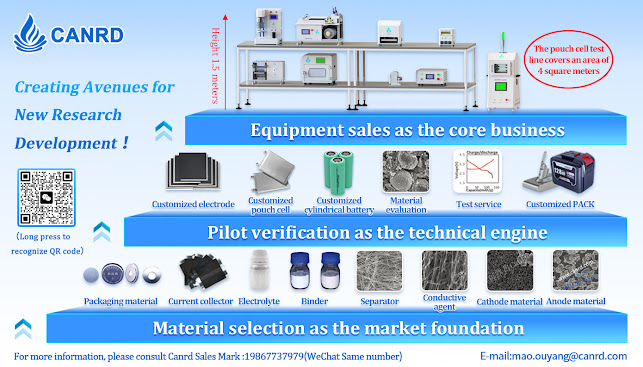A complete analysis of lithium battery internal resistance, understand the core parameters in one article!
[Scientific Research] A complete analysis of the internal resistance of lithium batteries: from DCR to EIS, understand the core parameters in one article!
1️⃣ Internal resistance and polarization internal resistance: the "invisible resistance" of the battery The internal resistance of a lithium battery is the resistance encountered when the current flows through the inside of the battery, which directly affects the power performance and heating efficiency of the battery. It consists of two parts: Ohmic internal resistance: comes from the electrode material, electrolyte, diaphragm and contact resistance, and is directly related to the battery structure and materials. Polarization internal resistance: caused by the polarization phenomenon in the electrochemical reaction, including electrochemical polarization (charge transfer delay) and concentration polarization (ion concentration gradient). The polarization internal resistance increases nonlinearly with the increase of current density, and is a key factor limiting high-rate discharge.
2️⃣ DCIR vs ACIR: The game between DC and AC internal resistance DCIR (DC internal resistance) is tested by pulse charge and discharge, and the formula is: DCIR = (U2 - U1) / I It reflects the dynamic impedance of the battery under actual working conditions, including ohmic internal resistance, polarization internal resistance and diffusion impedance, and is often used to evaluate the large current discharge capacity of the battery. ACIR (AC internal resistance) is tested using high-frequency AC (such as 1kHz). At this time, the polarization effect is ignored, and the measured value is approximately equal to the ohmic internal resistance, which is used to quickly detect the initial state of the battery. Difference: DCIR includes the comprehensive resistance of the dynamic process, and ACIR only reflects the static ohmic characteristics.
3️⃣ EIS: The "deconstruction magic" of electrochemical impedance spectroscopy Electrochemical impedance spectroscopy (EIS) analyzes the impedance response of the battery by applying sinusoidal voltage/current of different frequencies: High frequency region (above 1kHz): corresponds to ohmic internal resistance (RΩ). Medium frequency region (1Hz~1kHz): reflects charge transfer resistance (Rct) and double layer capacitance (Cdl). Low frequency region (<1Hz): characterizes ion diffusion impedance (Rw). EIS advantage: can separate different dynamic processes inside the battery, which is used to study aging mechanisms (such as SEI film thickening leading to increased Rct)
4️⃣ Impact of internal resistance on battery performance Too large internal resistance: Voltage drops sharply during high current discharge, shortening battery life; Joule heat (I²R) intensifies, causing thermal runaway risk. Too small internal resistance: Although it reduces energy consumption, it requires optimization of materials and processes, and the cost is high. Industry standard: The internal resistance of power batteries usually needs to be <15mΩ, and that of consumer batteries is 30-80mΩ.
🔍 Scientific research value and industry trends Aging monitoring: EIS accurately evaluates the battery health state (SOH) through changes in Rct and Rw. Material optimization: Reducing polarization internal resistance is the core direction of developing high-rate batteries (such as nano-coated electrodes). Smart BMS: Combine DCIR and EIS data to achieve dynamic internal resistance compensation and improve battery pack balance.
Canrd Brief Introduce
Canrd use high battery R&D technology(core members are from CATL) and strong Chinese supply chain to help many foreign companies with fast R&D. We provide lab materials,electrodes, custom dry cells, material evaluation, perfomance and test, coin/pouch/cylindrical cell equipment line, and other R&D services.
Email:janice@canrd.com
Phone/Wechat/WhatsApp/Skype:+86 18928276992
Website : www.canrud.com












No comments:
Post a Comment